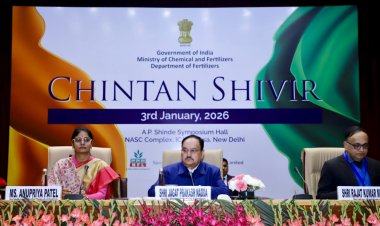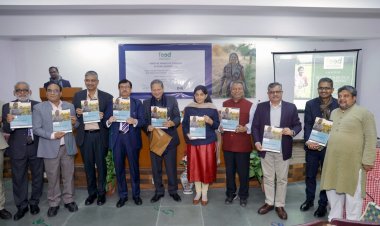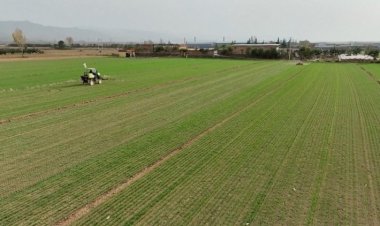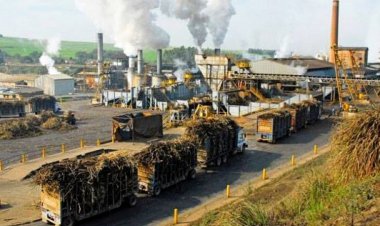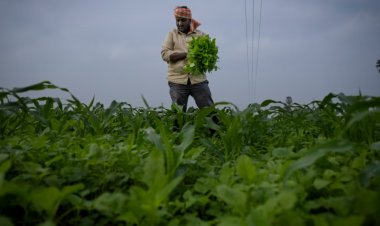Govt trying to avert a possible fertilizer availability crisis due to rise in global prices
The steep rise in the prices of fertilizers and their raw materials in the global market has been troubling the government over the last few months. The government is trying to find a solution to the crisis with the help of domestic fertilizer producers and the exercise of diplomatic options. If the situation does not come under control, the farmers may have to face fertilizer scarcity in the coming Rabi season. According to highly placed official sources, the Minister for Chemicals and Fertilizers had a long meeting this week with the domestic fertilizer producers on this issue.

The steep rise in the prices of fertilizers and their raw materials in the global market has been troubling the government over the last few months. The government is trying to find a solution to the crisis with the help of domestic fertilizer producers and the exercise of diplomatic options. If the situation does not come under control, the farmers may have to face fertilizer scarcity in the coming Rabi season. According to highly placed official sources, the Minister for Chemicals and Fertilizers had a long meeting this week with the domestic fertilizer producers on this issue. Besides, the government is trying to exercise diplomatic options to seek help from Russia, Morocco and Iran and make the import increase route easier so that a fertilizer availability crisis may be averted in the Rabi season.
The rate at which the prices of fertilizers and their raw material have risen has caused a great deal of concern for the government and the domestic fertilizer producers. Given this situation, if the government does not go for a massive hike in subsidy, the farmers will have to buy fertilizers at higher prices. According to industry sources, a country like the US is paying $700 per tonne for monoammonium phosphate (MAP).
In fact, there has been a steep rise in the prices of agricultural commodities, especially soybeans, in the global markets. This has led to a massive increase in the acreage of crops in the US, Brazil and Argentina. Of these, the largest increase has been in the acreage of soybeans and maize. This has led to an unprecedented rise in fertilizer demand in the global market, which in turn has led to the prices of raw materials of fertilizers and those of manufactured fertilizers reaching new highs.
Meanwhile, China, the world’s largest producer of diammonium phosphate (DAP), has temporarily suspended its exports. Besides, it has ordered a probe into the unprecedented increase of fertilizer prices within the country. On the other hand, the European Union (EU) has imposed economic sanctions against Belarus, the East European country counted among the largest phosphate producers, on grounds of human rights violations and other issues. Exports have, therefore, stopped from this country.
Thus, a steep rise in demand coupled with a fall in supply has led to a steep rise in fertilizer prices. Besides rock phosphate, sulphuric acid and DAP, India is also a large importer of urea. Therefore, these increased prices may create for us a heavy pressure on subsidy and a supply crisis.
According to sources, in the meeting held with the fertilizer producers, the government has asked them to continue with their production and wait for its next move. There is about a month and a half to go before the Rabi season starts. Time will be needed to ensure supply in the fertilizer-consuming areas. Those associated with the fertilizer industry say that the government will have to move fast on this front. Even if imports are made from a country like Russia, it takes two months for these to reach India. DAP and other complex fertilizers are the most under pressure because the degree of import dependence is very high in their case.
According to industry sources, contracts for urea imports were signed for the country at the price (cost and freight included or CFR) of $290 per tonne during this period last year. But this price has now gone up to $510-515 per tonne. The import price of DAP has gone up from $330 per tonne to $630 per tonne; that of phosphoric acid from $625 per tonne to $998 per tonne; ammonia from $205 per tonne to $670 per tonne; and sulphur from $75 per tonne to $210 per tonne.
A year ago, MOP was being imported at $230 per tonne while the Indian importers signed contracts with the global producers at $280 per tonne for the December 2021 supply. However, thanks to the economic sanctions imposed against Belarus by the US and the European countries, the prices have surged from $280 per tonne to $400 per tonne. Belarus, an East European country, is the second-largest MOP supplier for India after Canada.
RuralVoice had done a detailed story on this issue on August 7, 2021 which may be accessed at the following link: https://eng.ruralvoice.in/latest-news-24/fertilizer-shortage-crisis-looms-due-to-steep-rise-in-global-prices.html
Domestic importers have gone slow on imports because of this increase in prices. This may result in a scarcity of fertilizer availability in the Rabi season. It is this apprehension that led the Ministry of Fertilizers to hold a meeting with the industry. What steps the government takes in the days to come will be significant. Fertilizer scarcity will also create political troubles for the government as five state assemblies are about to go to polls. And these states include a large one like Uttar Pradesh and a major fertilizer-consuming one like Punjab.



 Join the RuralVoice whatsapp group
Join the RuralVoice whatsapp group

















